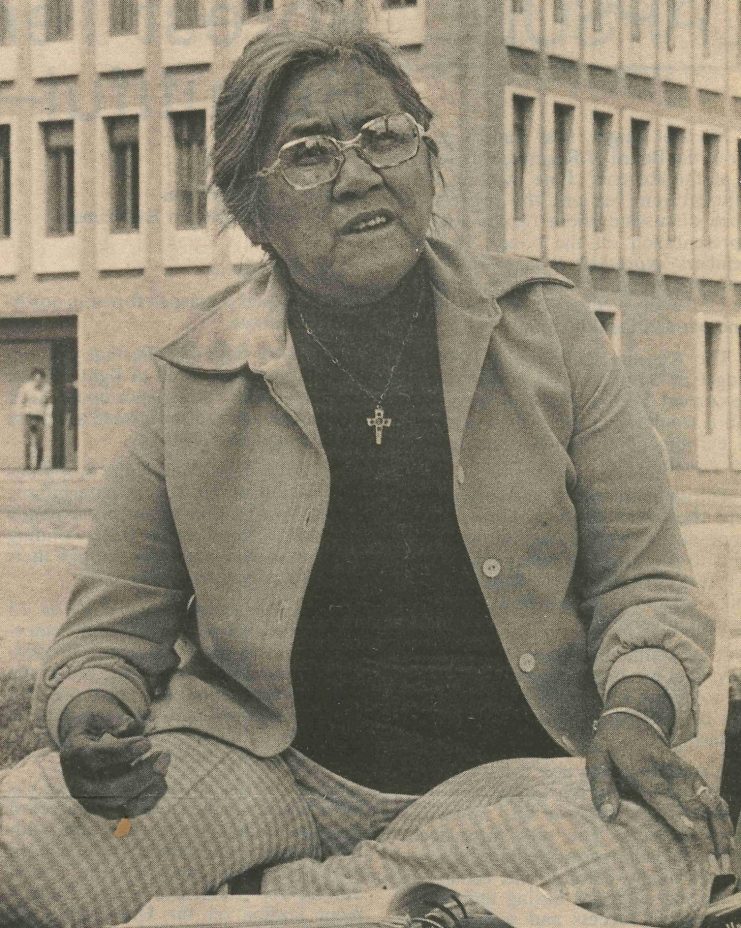
Forrest O. Wiggins, 1947. Hired by the University of Minnesota as an instructor in Philosophy, Prof. Wiggins was the first African American to teach at the University of Minnesota. Dismissed from the University in 1951, Wiggins believed the reasoning was directly related to his socialist ideology.

Mulford Q. Sibley, 1971. Prof. Sibley arrived on campus in 1948 and was a member of the Department of Political Science until he retired in 1982. Sibley was an ardent pacifist, socialist, and Quaker.
Ideology & Academic Freedom
Both Forrest Wiggins and Mulford Sibley (pictured above) had strong intellectual ideas, both were considered radical, faculty supported the teaching of both, and students learned a great deal from them. While Forrest Wiggins was dismissed, Sibley was heralded as a beacon of free thought. One must question: What made their trajectories at the University of Minnesota so different?
A preview of Calling to Question: 150 Years of Liberal Education at the University of Minnesota (opening March 4, 2019) is currently on display in the Katherine E. Nash Gallery. This preview is composed of two display cases within On Purpose: Portrait of the Liberal Arts. The preview compliments the style of the portrait exhibit by showcasing retrospective portraits of the College of Liberal Arts alongside the personal accounts of the people involved in these historical snapshots. At the core of Calling to Question are stories about how liberal education has instilled the idea questioning as a mode of learning more about oneself, challenging the status quo, and using learning to create a more equitable human experience.
Some humorous, some confrontational, and taking place at different points in time in the College’s 150-year history, each of these portraits highlights different departments, students, and faculty of the College. The preview discusses satirical pranks played by liberal arts sophomores that enraged the university faculty, a delinquent journalism class started by students, racial double standards inherent in the value of “academic freedom,” and a few of the people that helped and benefited from the founding of American Indian Studies and African-American Studies.
Liberal education is constantly defined by the people participating in it; those in charge can limit how far liberal arts education reaches while students, faculty, and community continually find ways for education in the College of Liberal Arts to be more equitable. Calling to Question aims to find these limitations and shed light on how questioning these limits has enhanced the College of Liberal Arts at the University of Minnesota.
Highlights from the Exhibit
In February of 1909, Junior in the College of Science, Literature, and the Arts, Carl Anton Anderson initiated the Voluntary Course in Journalism at the University of Minnesota. Anderson reserved a room in the Library (later Burton Hall) and hung up posters and advertised the 10-week, no credit course. He tactfully avoided antagonizing the Regents for fear of expulsion. Anderson visited people in the industry throughout the Twin Cities, including William J. Murphy, owner of the Minneapolis Tribune. He sought endorsements for the course as well as recruited speakers. Journalists from across the area spoke on different subjects in journalism over the length of the course.
One result of the 1969 Morrill Hall Takeover was increased classes on African-American studies throughout CLA including Humanities 50. This class, intended for people not necessarily in the African American Studies Department, was on “Institutional Racism in America.” A student-published source of news and commentary is generated from this class entitled “Free Amerika.”

A student-published source of news and commentary, “Free Amerika,” is generated from the Humanities 50 course Institutional Racism in America.
In May 1969, a committee recommended the creation of the American Indian Studies Program–only one day after the All-College Council approved the African American Studies Department. While the students and activists pushing for this department used a variety of tactics to reach their goal, they also credited the African American Action Committee for the acceleration of this process. From the beginning of the idea of the department, languages were of high importance.
Rose Barstow taught the Ojibwe language in the American Indian Studies Program. The language initiative was an integral part of the program from the beginning.
My greatest hope is that young Indians will learn the language so they can learn the truth about themselves from their elders. One of the things I try to bring into this introductory course is identity—for the non-Indians as well as the Indians. That’s why we spend some days on German or Scandinavian culture. I love all my students.
— Rose Barstow
The preview of Calling to Question: 150 Years of Liberal Education at the University of Minnesota is on display until December 8, 2018 in the Katherine E. Nash Gallery. Visit the full exhibit March 4 through June 14, 2019 in the Maxine Houghton Wallin Research Center’s James Ford Bell Gallery in the Elmer L. Andersen Library.
—Noah Barth is a graduate student in the Heritage Studies & Public History program and an Archives Research Assistant at the University Archives. To learn more about the University of Minnesota Archives, please visit www.lib.umn.edu/uarchives.






